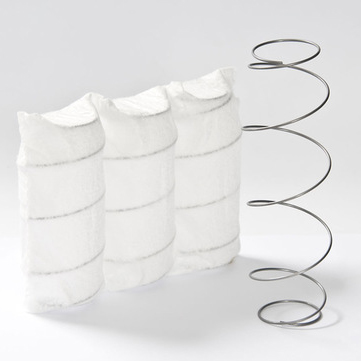Nonwoven wipes, facemasks and hygiene products have become critical items in controlling the spread of the Covid-19 pandemic.
Published today, Smithers’ new in-depth analysis report – The Impact of Supply Chain Disruptions on Nonwovens Manufacturing – examines how Covid-19 has been a major shock to the industry worldwide, necessitating new paradigms for supply chain management. With global nonwoven sales set to reach $51.86 billion in 2021, this expert study examines how these will continue to evolve over 2021, and through to 2026.
Covid’s most immediate impact was a critical demand for meltblown and spunlace personal protective equipment (PPE), and wipes – as these became a cornerstone for cutting infections in clinical environments. N-95 grade, and later N-99 grade, face coverings have in particular been a focus as the most effective PPE for stopping infection spread. In response existing nonwoven production lines have run at beyond their rated capacities; and new lines, commissioned and fitted in record time, are coming on stream through 2021 and in to 2022.
The Covid-19 pandemic only marginally affected the total volume for nonwovens worldwide. Huge increases in relatively small market segments like disinfecting wipes and meltblown face mask media saw supply chains for these were stressed and in some cases fractured by unprecedented demand and suspensions of trade. These gains were offset by decreases in larger market segments like food service wipes, automotive, construction and most other durable nonwoven end uses.
Smithers’ systematic analysis tracks the impact of Covid-19, and its related disruptions at each stage of the supply chains – raw material supply, equipment manufacturers, nonwoven material producers, converters, retailers and distributors, and ultimately consumers and industrial users. This is buttressed by further analysis on key related segments, including additive supply, transport, and sourcing of packaging.
It considers both the immediate impact and the medium-term ramifications of the pandemic on all nonwoven segments. One of the key changes is that having exposed regional biases in current supply there will be an impetus towards reshoring of production and converting of key nonwoven media in Europe and North America; coupled with greater stock holdings of key end products, like PPE; and an emphasis on better communication across supply chains.
In consumer segments, changing behaviors will create both opportunities and challenges. Overall nonwovens will perform better over the next five years than pre-pandemic predictions – with enduring demand for disinfecting and personal care wipes, combining with less brand loyalty and many sales moving to e-commerce channels.
If – and when – the Covid threat recedes, there is potential for oversupply and nonwoven suppliers will need to consider future diversification if newly installed assets are to continue to remain profitable. Through the 2020s drylaid nonwovens will be particularly vulnerable to any future supply chain disruptions as the re-emergence of the sustainability agenda pushes a transition from plastic containing SPS to non-polymer carded/airlaid/carded spunlace (CAC) constructions.
The Impact of Supply Chain Disruption on Nonwovens Manufacturing charts how these challenging new market dynamics will affect every stage of the nonwovens industry through to 2026.
Exclusive insight shows how supply chains for specific nonwoven media and end-use products will have to adjust; with specific insight into raw material availability, and shifts in end-user attitudes to health, hygiene, and the role of nonwovens.
Post time: Jun-24-2021








